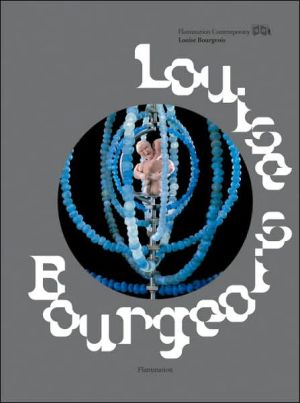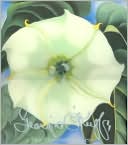Louise Bourgeois
This French-born artist emigrated to the United States in 1938. Bourgeois has produced a body of work that spans more than five decades, including over 25 worldwide exhibitions in 2005 alone. Famous for her highly experimental and autobiographical sculptures, Bourgeois's work also includes intimate drawings, paintings, and personal writings. She is a pioneer in tackling issues of empowerment, sexuality, and the roles of women in her diverse oeuvre. Her art can be found in the permanent...
Search in google:
This French-born artist emigrated to the United States in 1938. Bourgeois has produced a body of work that spans more than five decades, including over 25 worldwide exhibitions in 2005 alone. Famous for her highly experimental and autobiographical sculptures, Bourgeois's work also includes intimate drawings, paintings, and personal writings. She is a pioneer in tackling issues of empowerment, sexuality, and the roles of women in her diverse oeuvre. Her art can be found in the permanent collections of prestigious institutions such as the Museum of Modern Art in New York, the Tate Modern in London, and the Pompidou Center in Paris. In 1993, Bourgeois represented the United States at the Venice Biennial. Louise Bourgeois presents the artist's long and productive career through a series of essays: a retrospective text, an interview, an analysis, and over 150 images that represent the totality of the artist's output from her earliest work to her most recent projects. This comprehensive volume with its innovative design pays tribute to an original and influential artist and is an essential addition to every contemporary art-lover's collection.Publishers WeeklyFrench-born Bourgeois emigrated to the U.S. in 1938, yet the nearly 60 years of adventurous work in sculpture, drawing, engraving and installation reproduced here reflects an admitted attempt to repair the childhood she escaped. In 150 illustrations (50 in color), we find a haunting, enigmatic exploration of sexuality and the home: ladders that lead only to the ceiling; a giant steel spider whose egg sac is a jar of blue fluid; arrays of abstract white marble forms that simultaneously suggest male and female genitalia, often placed in enclosed, almost soothing, roomlike settings. Bernadac, curator of graphic arts at the Paris Muse National d'art Moderne, treats Bourgeois's uncanny mix of domestic comforts and erotic terrors as pointing to the ultimate imbrication of our desires into the structures we create, formal or familial. Her interpretations, while sometimes didactic and often overshadowed by the artist's own commentary, provide a welcome chronological overview of this remarkable and still evolving career. (June)
Introduction: Sculpting Emotion7Ch. IPrimal Scenes (Drawing, Painting, Engraving)13Ch. IIHomesickness49Ch. IIIOrganic Refuge65Ch. IVDestruction of the Father89Ch. VBody Parts103Ch. VISites of Memory121The Critics: Articles on Louise Bourgeois, 1995155Biography163Selected bibliography189
\ Publishers WeeklyOne contributor to this retrospective asks: "How is it that an artist whose career spans some seventy years continues to appear vital and contemporary...?" Bourgeois's work, sometimes abstract and sometimes not, is sculpture or installation, may be sewn out of fabric or carved out of wood, and is ever intimate, feminist, eccentric and interesting. The difficulty of memorializing the work of such an extraordinary living artist is handled through a "glossary" of terms, a neat trick that puts "Etching" next to "Existentialism" and "Materials" next to "Maternity." This treatment pairs shorter and longer essays by art critics with excerpts from Bourgeois's diaries and interviews, providing a deep and textured sense of the artist's biography. Personally and creatively, Bourgeois was deeply affected by her mother's tolerance of her father's affair with the daughter's own tutor. Bourgeois's work doesn't follow any clear trajectory, so the episodic nature of this presentation displays her work appropriately. It can be difficult to connect a piece of text to the hundreds of reproductions of the artist's work (many in full spreads), but the overall impression is very effective-a suitable presentation for this intriguing and multifaceted artist. (Apr.)\ Copyright © Reed Business Information, a division of Reed Elsevier Inc. All rights reserved.\ \ \ \ \ Publishers Weekly - Publisher's Weekly\ French-born Bourgeois emigrated to the U.S. in 1938, yet the nearly 60 years of adventurous work in sculpture, drawing, engraving and installation reproduced here reflects an admitted attempt to repair the childhood she escaped. In 150 illustrations (50 in color), we find a haunting, enigmatic exploration of sexuality and the home: ladders that lead only to the ceiling; a giant steel spider whose egg sac is a jar of blue fluid; arrays of abstract white marble forms that simultaneously suggest male and female genitalia, often placed in enclosed, almost soothing, roomlike settings. Bernadac, curator of graphic arts at the Paris Muse National d'art Moderne, treats Bourgeois's uncanny mix of domestic comforts and erotic terrors as pointing to the ultimate imbrication of our desires into the structures we create, formal or familial. Her interpretations, while sometimes didactic and often overshadowed by the artist's own commentary, provide a welcome chronological overview of this remarkable and still evolving career. (June)\ \ \ Donna SeamanThis elegant volume is the second book about Bourgeois to appear in recent months, evidence of a surge of interest that Bernadac succinctly describes as "inversely proportional to the neglect" Bourgeois suffered for decades. Bernadac, former curator of the Musee Picasso, offers convincing explanations both for the art world's persistent blindness to Bourgeois' startlingly original, sensual, and challenging sculpture and for the sudden recognition of its power, integrity, and courageous beauty. Bernadac successfully combines biography with criticism throughout this chronological overview, enriching the experience of viewing Bourgeois' art, from her highly symbolic works on paper to her newest work, the "cells," mysterious and dramatic large-scale installations. These daring works have occupied the indefatigable Bourgeois since she entered her eighties five years ago. Fiercely independent, adept at creating provocative abstractions out of myriad materials, Bourgeois is "unclassifiable" and profoundly compelling, qualities attributable, Bernadac believes, to Bourgeois' perception of art as fetishistic. For Bourgeois, the making of art is a magical and curative act, deeply emotional and erotic, thus resoundingly universal.\ \








